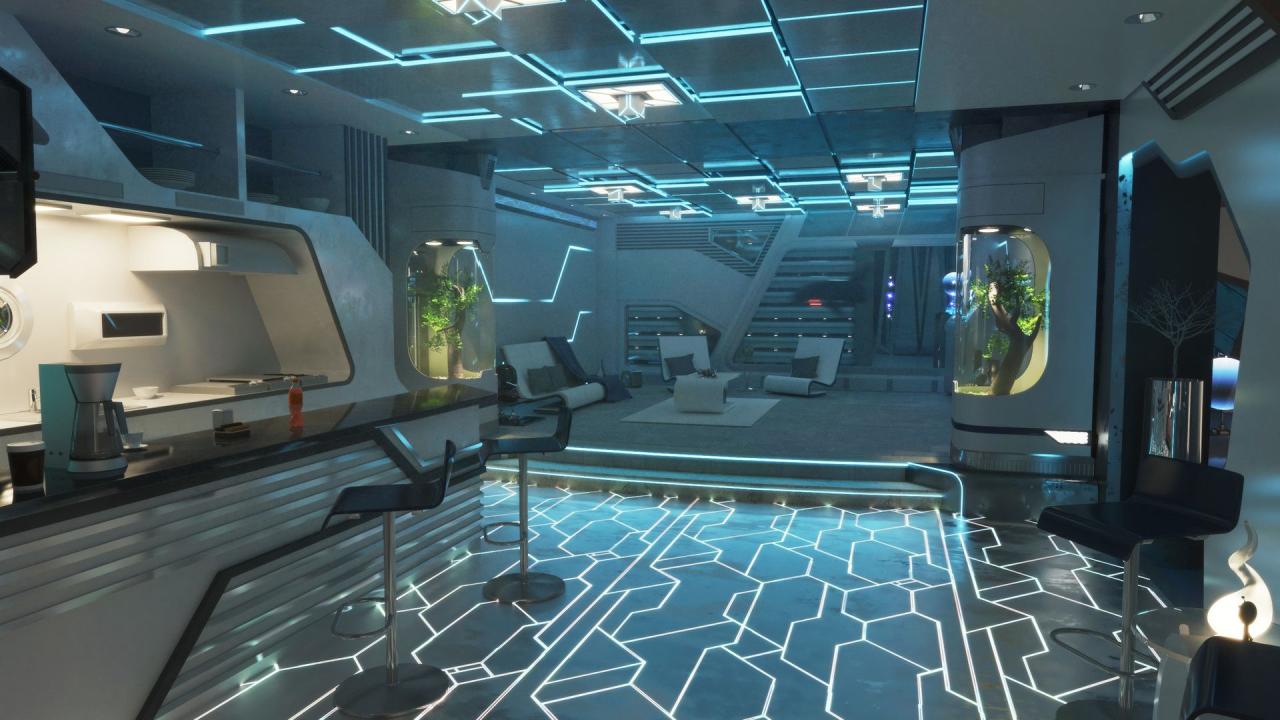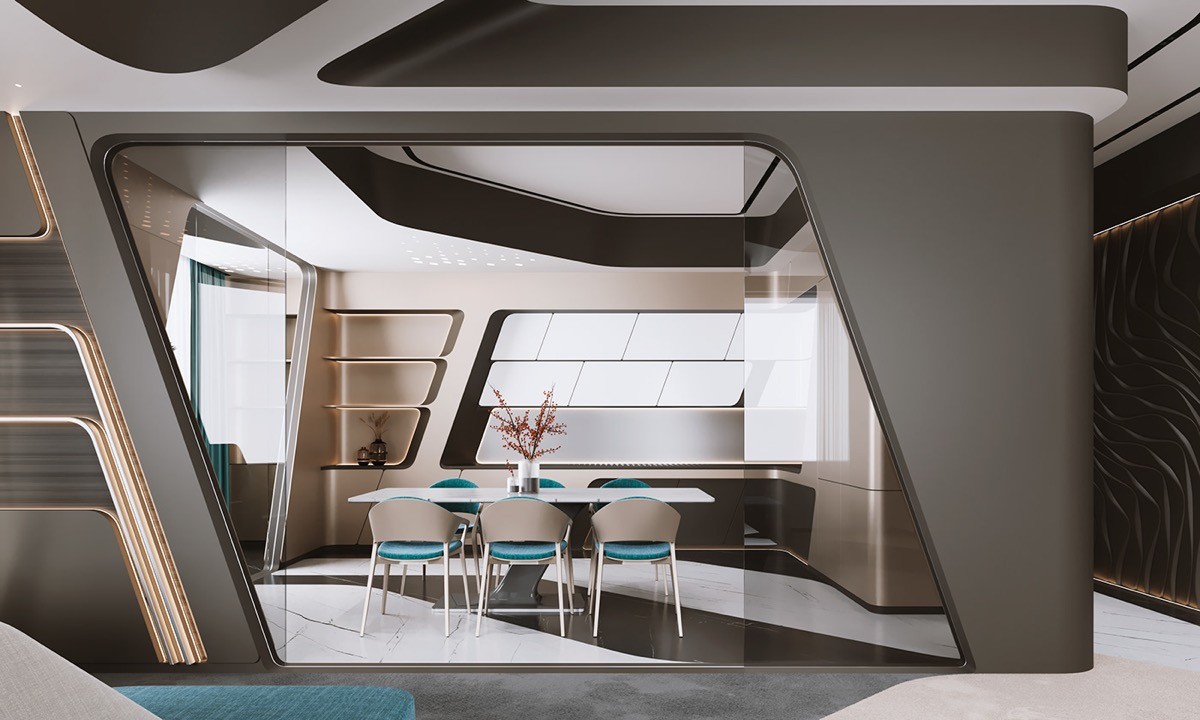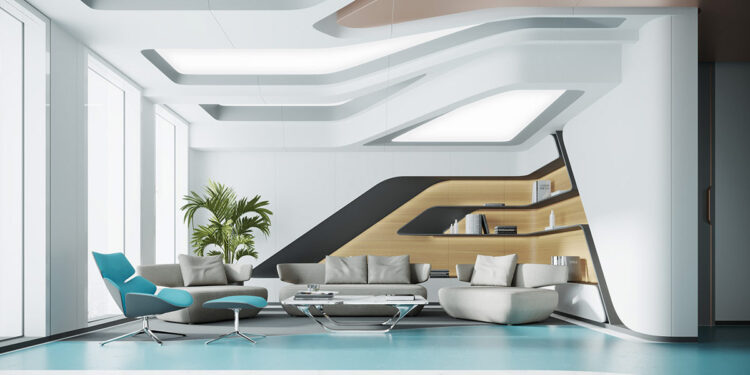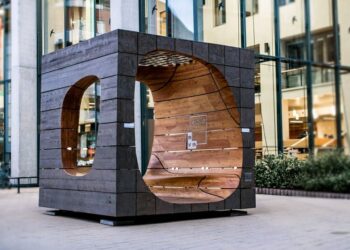The concept of “home” is continuously evolving, driven by unprecedented technological advancements, shifting societal values, and a growing emphasis on well-being and sustainability. Today, future-forward interior concepts are emerging as a powerful force, reimagining how we live, work, and interact within our built environments. It’s no longer just about aesthetics; it’s about creating dynamic, intelligent, and adaptive spaces that anticipate our needs and enhance every aspect of our daily lives. This comprehensive article delves into the transformative trends shaping the interiors of tomorrow, exploring the foundational ideas, the innovative technologies driving their realization, and their profound impact across residential, commercial, and public spaces. We’ll uncover how designers and innovators are crafting environments that are not only visually compelling but also profoundly functional, sustainable, and intimately responsive to human existence.
The Vision of Foundational Concepts

Future-forward interior concepts are built upon several key pillars, reflecting a holistic approach to design that anticipates future human needs and technological capabilities.
A. Adaptability and Flexibility: Tomorrow’s interiors will be less static and more fluid, capable of transforming to accommodate different functions, moods, or user numbers. This means multi-functional furniture, movable walls, and modular systems that can be easily reconfigured.
B. Seamless Technology Integration: Technology won’t be an add-on; it will be invisibly woven into the fabric of the space, creating intuitive and proactive environments that respond to human presence and preferences. This goes beyond smart devices to truly intelligent ecosystems.
C. Hyper-Personalization: Spaces will intuitively adapt to individual occupants, learning their habits, moods, and health data to create tailored experiences in real-time, from lighting and temperature to content and even scent.
D. Health and Well-being Centricity: The design of interiors will prioritize physical and mental health. This includes optimizing air quality, lighting for circadian rhythms, promoting movement, and reducing stress through biophilic elements and calming aesthetics.
E. Sustainability and Circularity: Future interiors will embrace principles of the circular economy, focusing on renewable, recycled, and non-toxic materials, designing for disassembly, and minimizing waste throughout the lifecycle of the space and its components.
F. Biophilic Connection: A deeper integration of natural elements, patterns, and processes into indoor environments, leveraging our innate human connection to nature to improve well-being and productivity. This moves beyond potted plants to living walls, natural ventilation, and dynamic lighting that mimics outdoor conditions.
G. Immersive Experiences: Interiors will increasingly offer multi-sensory and immersive experiences, whether for entertainment, relaxation, or work, leveraging advanced projection, soundscapes, and interactive surfaces.
These foundational concepts represent a paradigm shift, moving from static design to dynamic, living environments that are deeply intertwined with human experience and ecological responsibility.
Technologies Reshaping Interiors
The ambitious vision for future interiors is being brought to life by a convergence of cutting-edge technologies, pushing the boundaries of what’s possible within a built space:
I. Artificial Intelligence (AI) and Machine Learning (ML)
AI and ML are the brains behind tomorrow’s intelligent interiors, enabling proactive and personalized experiences.
A. Predictive Environments: AI analyzes occupant behavior, environmental data, and external factors (e.g., weather forecasts) to anticipate needs and proactively adjust lighting, temperature, music, and even privacy settings. Imagine a room that knows you’re about to arrive home and prepares itself.
B. Personalized Interfaces: Voice control, gesture recognition, and even biometric inputs (e.g., eye-tracking, mood detection) will become the primary ways to interact with the environment, with AI understanding and responding to nuanced commands.
C. Optimized Resource Management: AI-powered systems will continuously monitor and optimize energy consumption (lighting, HVAC), water usage, and waste management, ensuring maximum efficiency and sustainability.
D. Generative Space Design: AI could assist designers by rapidly generating countless layout permutations, material palettes, and furnishing options based on user needs, site constraints, and desired aesthetic, accelerating the design process.
E. Adaptive Soundscapes: AI can create dynamic sound environments that adapt to activity levels, time of day, or user preferences, from calming white noise for focus to vibrant background music for social gatherings.
AI transforms interiors from passive structures into active, learning entities that respond intelligently to their occupants
II. Advanced Materials and Fabrication
Innovations in material science and manufacturing are leading to responsive, sustainable, and highly customizable interior components.
A. Smart Glass and Dynamic Surfaces: Glass that can change opacity, tint, or display digital content on demand, allowing for instant privacy, glare control, or immersive visual displays. Surfaces that can change color, texture, or even emit light or sound.
B. Self-Healing and Adaptive Materials: Materials that can self-repair minor damage, or adapt their properties (e.g., insulation, flexibility) in response to environmental stimuli, extending longevity and reducing maintenance.
C. Bio-Integrated Materials: Materials derived from natural processes (e.g., mushroom mycelium, algae, bio-plastics) that are biodegradable, renewable, and often have air-purifying properties, promoting health and sustainability.
D. Digital Fabrication (3D Printing, CNC): Allows for the creation of highly customized, complex, and organic forms for furniture, architectural elements, and decorative items, minimizing waste and enabling on-demand production.
E. Phase-Change Materials (PCMs): Integrated into walls or ceilings, PCMs can absorb and release thermal energy, passively regulating indoor temperatures and reducing reliance on HVAC systems.
These material innovations enable interiors to be more dynamic, resilient, and responsive to environmental and human needs.
III. Connectivity and IoT (Internet of Things)
The seamless integration of countless smart devices creates a powerful, unified interior ecosystem.
A. Ubiquitous Sensors: Tiny, almost invisible sensors embedded throughout the space will monitor everything from air quality, temperature, and humidity to occupancy, light levels, and even biometric data (e.g., sleep patterns), feeding data to the central AI.
B. Wireless Power Transfer: The ability to wirelessly power devices embedded in walls, furniture, or floors would eliminate cords, enhance flexibility, and reduce visual clutter, truly making technology disappear.
C. Advanced Home Networks: Next-generation Wi-Fi, 5G, and dedicated IoT protocols (e.g., Thread, Matter) will ensure robust, high-speed, and secure communication between hundreds of devices, from appliances to structural elements.
D. Digital Twins: Creating virtual replicas of physical interiors allows for real-time monitoring, predictive maintenance, and simulation of design changes or user interactions before implementation.
E. Edge Computing: Processing data closer to the source (on the devices themselves) reduces latency and enhances privacy, allowing for faster, more responsive, and more secure local interactions within the smart interior.
IoT and advanced connectivity are making interiors “intelligent” by enabling every component to communicate and act in concert.
IV. Immersive Technologies (AR/VR)
Augmented and Virtual Reality will not only be entertainment but also integral to how we design and experience future interiors.
A. Virtual Design and Visualization: Architects and interior designers will use VR to walk through and refine designs in a fully immersive 3D environment before construction, allowing clients to experience spaces realistically.
B. Augmented Reality Overlays: AR will allow users to overlay digital content (e.g., virtual furniture, dynamic art, interactive information) onto physical spaces using smart glasses or mobile devices, transforming the appearance and functionality of a room on demand.
C. Dynamic Virtual Decor: Instead of fixed artworks, walls could display ever-changing digital art, interactive projections, or virtual window views that adapt to mood or preference.
D. Personalized Digital Personas: Users could interact with virtual assistants or even digital avatars that are seamlessly integrated into the physical space, providing information or companionship.
Immersive technologies will turn interiors into dynamic canvases, capable of boundless aesthetic and functional transformations.
Future-Forward Interiors

These advanced concepts and technologies are fundamentally reshaping how we approach interior design across various contexts.
I. Residential Spaces
Homes will become personalized ecosystems that adapt to the dynamic needs of their inhabitants.
A. Fluid Layouts and Multi-Functional Zones: Living rooms that transform into home offices, bedrooms that become meditation spaces, or kitchens that expand for entertaining, all with movable walls, transforming furniture, and intelligent partitions.
B. Hyper-Personalized Ambiance: Lighting that adjusts color temperature and intensity based on circadian rhythms, time of day, or individual mood. Temperature zones that learn and adapt to each occupant’s comfort preferences.
C. Integrated Health Monitoring: Beds that track sleep quality, mirrors that analyze skin health, and air purification systems that detect allergens or pollutants, all integrated to promote holistic well-being.
D. Seamless Entertainment and Work Integration: Projectors that turn any wall into a cinema screen, augmented reality overlays for interactive gaming, and hidden workspaces that emerge when needed, blending work, leisure, and living.
E. Sensory Regulation: Spaces designed to intuitively manage sensory input – reducing noise for focus, enhancing light for alertness, or releasing calming scents for relaxation, often adapting based on user biometric data.
F. Aging-in-Place and Accessibility: Homes that subtly adapt to occupants’ changing mobility or cognitive needs over time, providing support without compromising aesthetics.
Future homes will be proactive partners in our well-being, intelligently adapting to support our ever-changing lives.
II. Commercial and Office Spaces
Workplaces are evolving into dynamic, flexible hubs designed to foster collaboration, creativity, and employee well-being.
A. Activity-Based Working (ABW), Evolved: Offices will feature a wider variety of specialized zones (focus pods, collaborative hubs, sensory-reduced quiet areas) that dynamically reconfigure based on AI-predicted usage patterns and real-time occupancy.
B. Personalized Work Environments: Desks that automatically adjust to ergonomic preferences, lighting that adapts to individual tasks, and climate zones that cater to personal comfort settings, all managed via intuitive personal interfaces.
C. Immersive Meeting Rooms: Walls that become interactive whiteboards, holographic projection for remote participants, and intelligent systems that manage presentations and collaborative tools seamlessly.
D. Wellness Pods and Recovery Zones: Dedicated spaces within offices for meditation, napping, or light exercise, designed with specific biophilic and sensory elements to promote mental and physical rejuvenation.
E. Data-Driven Space Optimization: Sensors and AI analyze foot traffic, desk usage, and meeting room occupancy to provide real-time insights for optimizing space utilization and energy consumption.
F. Biophilic Integration for Productivity: Extensive living walls, internal water features, natural light harvesting, and dynamic lighting that mimics natural cycles to reduce stress and boost cognitive performance.
Future offices will be flexible, intelligent ecosystems that prioritize employee health, creativity, and collaboration.
III. Retail and Hospitality
Retail stores and hotels will transform into immersive, personalized, and memorable experiential destinations.
A. Dynamic Retail Displays: Store interiors with adaptable layouts, interactive product displays that respond to customer proximity, and projection mapping that transforms walls and floors into ever-changing brand narratives.
B. Phygital Shopping Experiences: AR mirrors for virtual try-ons, AI-powered personal shoppers that recommend products based on real-time style analysis, and seamless integration of online Browse with in-store interaction.
C. Adaptive Hotel Rooms: Rooms that personalize lighting, temperature, entertainment, and even art displays based on individual guest preferences, creating a bespoke stay.
D. Immersive Dining Experiences: Restaurants with projection-mapped tables that transport diners to different landscapes, or AI-curated menus that adapt to dietary preferences and even mood.
E. Sensory Lounges: Areas designed to engage all senses, perhaps with a specific scent, temperature, light profile, and soundscape to create a unique brand or relaxation experience.
Future retail and hospitality environments will prioritize engagement, personalization, and creating unforgettable moments that extend beyond the core service.
Challenges and Ethical Considerations
The move towards future-forward interiors, while promising, also presents significant challenges and ethical considerations that must be addressed responsibly.
A. Privacy and Data Security: The vast amount of personal data collected by intelligent interiors (e.g., habits, health, presence) raises major privacy concerns. Robust security protocols and transparent data usage policies are paramount.
B. Cost and Accessibility: Advanced technologies and custom fabrication can be expensive, potentially making future-forward interiors inaccessible to broader populations, exacerbating existing inequalities.
C. Technological Obsolescence: The rapid pace of technological change means that embedded systems could become outdated quickly, leading to costly upgrades or rendered obsolete features. Design for modularity and upgradability is key.
D. Complexity of Maintenance: Highly integrated smart systems may require specialized knowledge for maintenance and repair, potentially increasing long-term costs and reducing user autonomy.
E. Digital Divide: The gap between those with access to advanced smart homes and those without could widen, impacting quality of life and opportunities.
F. Algorithmic Bias: If AI systems are trained on biased data, they could inadvertently create discriminatory environments, reinforcing existing inequalities in personalization or access.
G. Energy Consumption of Smart Systems: While smart homes aim for efficiency, the sheer number of connected devices and always-on AI processing could lead to increased overall energy consumption if not designed carefully.
H. Resilience and Robustness: Ensuring these highly complex systems are resilient to power outages, cyberattacks, or technical malfunctions is critical for safety and continuous functionality.
Addressing these challenges requires a collaborative effort among designers, technologists, policymakers, and ethicists to ensure future interiors are not just smart, but also equitable, secure, and truly enhance human well-being.
The Grand Vision
The future of interior concepts is not about sterile, futuristic minimalism, but about creating dynamic, responsive, and deeply human-centric environments. It’s a vision where our spaces become extensions of ourselves, intuitively adapting to our needs, fostering our well-being, and connecting us more deeply with both technology and nature.
I. Regenerative Interiors: Beyond just being sustainable, interiors could actively contribute to the environment, perhaps by purifying air and water, generating energy, or even growing food within their confines.
J. Emotionally Intelligent Spaces: Interiors that can sense and respond to human emotions, perhaps adjusting lighting, soundscapes, or even offering gentle nudges to promote relaxation or focus.
K. Hyper-Sensory Environments: Spaces designed to provide highly curated sensory experiences, from therapeutic light and sound baths to immersive narratives that engage all senses, transforming mundane activities into enriching journeys.
L. Blended Realities as Standard: The seamless integration of physical and digital layers will be the norm, with AR overlays, holographic projections, and dynamic surfaces transforming environments on demand.
M. AI as the Spatial Architect: While human creativity remains paramount, AI will increasingly act as a co-designer, providing real-time feedback on environmental impact, functional optimization, and user experience, leading to truly innovative spatial solutions.
Conclusion
Future-forward interior concepts represent a fascinating frontier where design, technology, and human experience converge. By embracing innovation responsibly and focusing on human well-being, these evolving spaces hold the potential to redefine what it means to live, work, and thrive in the world of tomorrow.






Discussion about this post